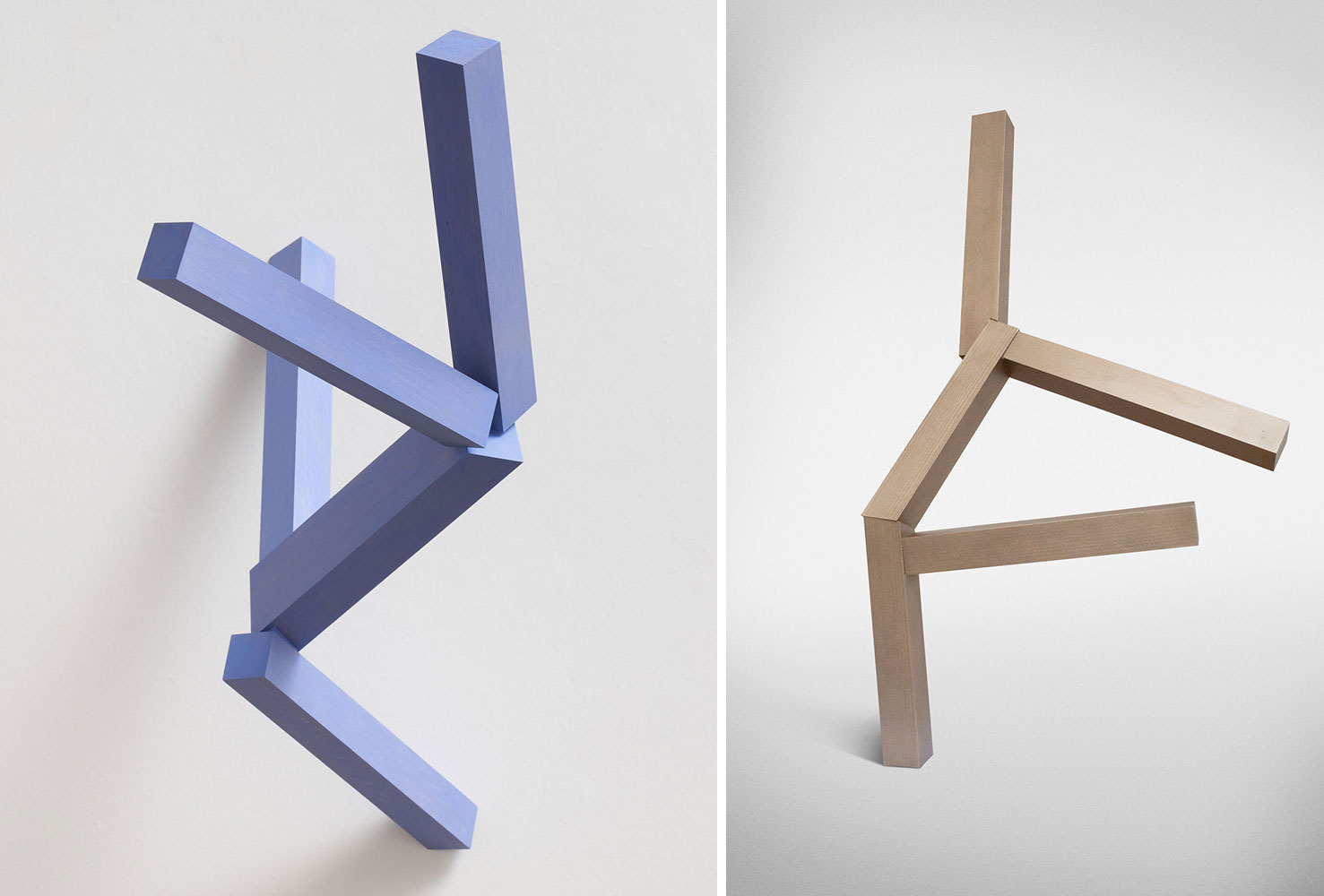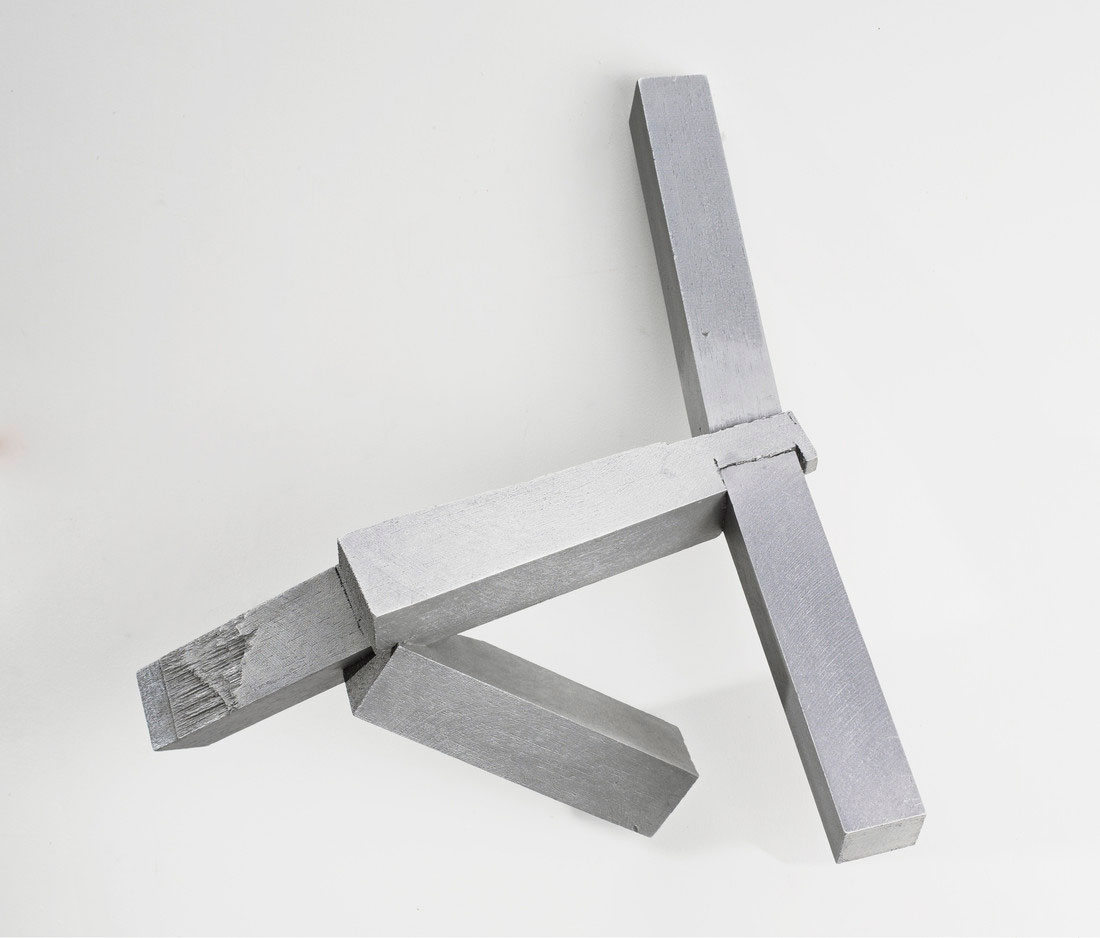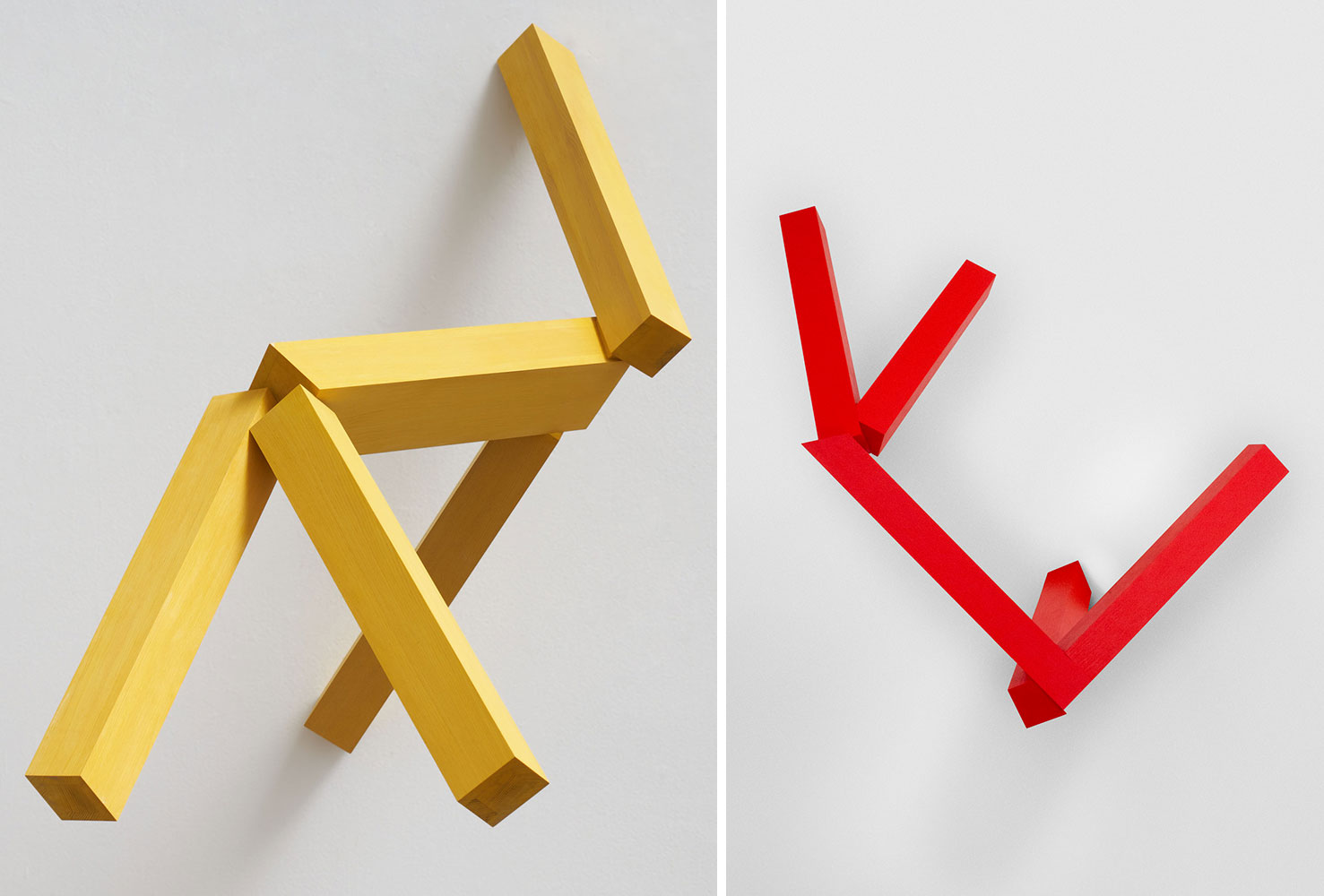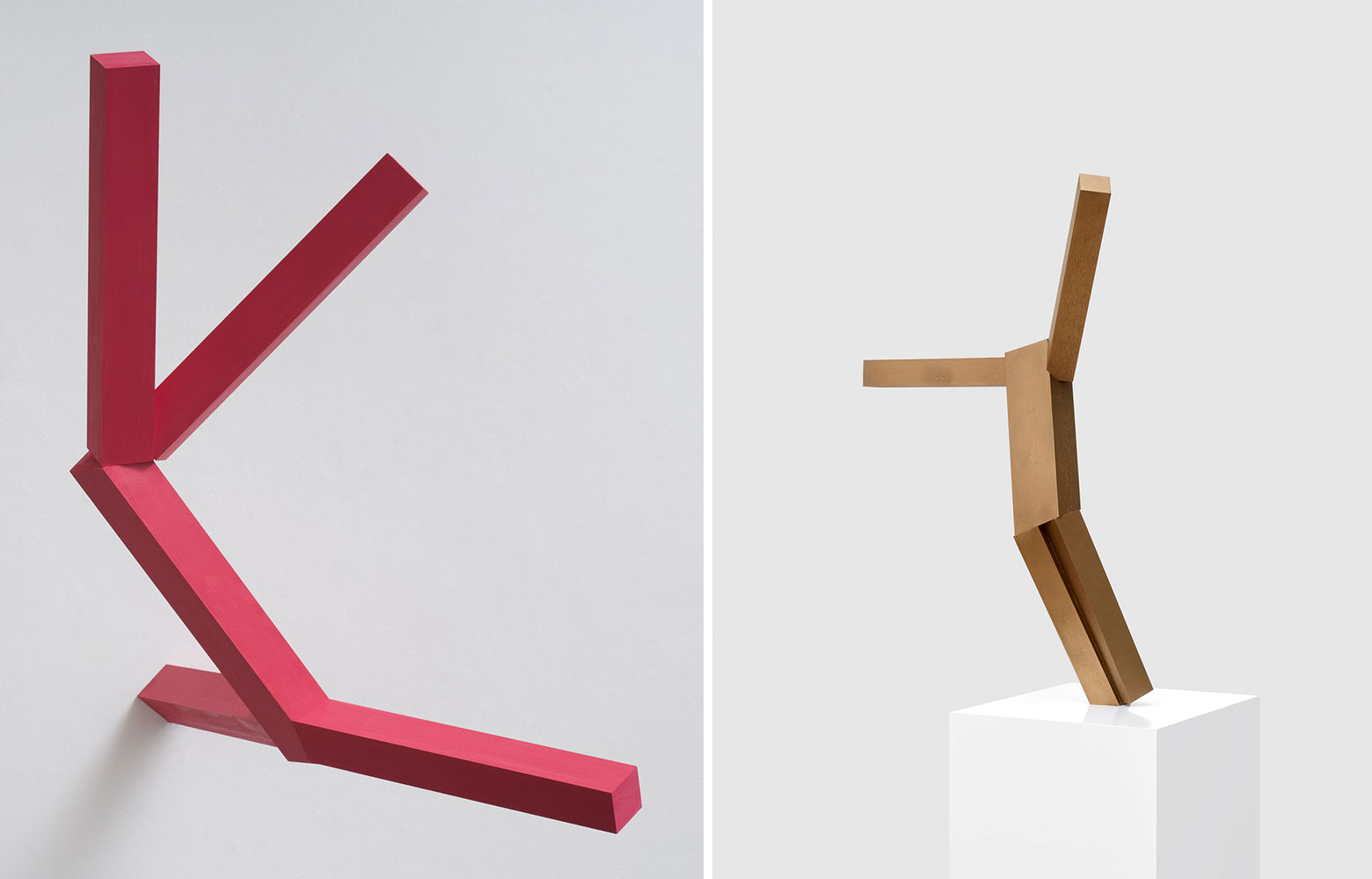ART CITIES:Seoul-Joel Shapiro
 Joel Shapiro creates abstract geometric sculpture that elicits a sense of movement and engages viewers’ physical and psychological relationships with space. In his recent investigations of the expressive possibility of form and color in space, the artist suspends painted wooden elements from the ceiling, wall, and floor, exploring the projection of thought into space without the constraint of architecture.
Joel Shapiro creates abstract geometric sculpture that elicits a sense of movement and engages viewers’ physical and psychological relationships with space. In his recent investigations of the expressive possibility of form and color in space, the artist suspends painted wooden elements from the ceiling, wall, and floor, exploring the projection of thought into space without the constraint of architecture.
By Efi Michalarou
Photo: Pace Gallery Archive
Joel Shapiro’s solo exhibition at Pace Gallery in Seoul, features nine new works and a selection of sculptures dating back to the mid-1990s and showcases the American sculptor’s longstanding investigations of color, form, and movement. With its inclusion of two freestanding wood figures, a selection of wall-attaching sculptures, and both large and small cast bronzes, the show traces the artist’s investigations of different materials and processes. The presentation examines not only Shapiro’s interest in exploring the line between abstraction and figuration, but also his preoccupation with engaging and energizing space and architecture. On the gallery’s second floor, an installation of smaller-scale sculptures foregrounds Shapiro’s use of color to animate and energize his works. Utilizing bright, mostly primary colors in the sculptures exhibited in this installation, Shapiro imbues his works with a sense of buoyancy and elation. Wooden sculptures painted in varying blue, red, and yellow tones, as well as bronze works in varying finishes—mounted on plinths and the gallery’s walls in different orientations—create an elegant, seemingly choreographed sense of motion throughout the gallery space. The third floor features three freestanding bronze sculptures displayed together as well as a blue painted bronze work from 2019 situated on the adjacent outdoor terrace. Upon entering the gallery, one is greeted by a dazzling bronze work from 2006–07 whose shimmering surface further dynamizes the work’s churning, rectilinear forms. This work’s densely compacted energy finds its complement and efflorescence in the taller, more ambulatory bronzes nearby. A 1995 cast bronze sculpture is the oldest and largest sculpture in the exhibition. Its pose, which might suggest a figure with outstretched arms, presages smaller-scale bronze works dating to this year on view in the second floor installation. Echoes of form and gesture can also be traced between the 1995 work and the sculpture from 2007–08, whose elongated limbs and flailing form seem to embody. As evinced by the blue painted sculpture installed on the gallery’s terrace, as well as the unpainted sculptures on the third and second floors, Shapiro’s bronze works often retain the qualities and characteristics of the wood patterns and forms from which they were cast, making the artist’s process visible and ever-present in the work. In a catalogue essay accompanying Shapiro’s 2018–19 solo exhibition at the Madison Museum of Contemporary Art, Wisconsin—organized by the institution’s erstwhile director Stephen Fleischman—curator Peter Boswell writes that “the evidence of wood grain and saw cuts in Shapiro’s rectangular elements evokes heavy timbers, impressing upon us a sense of their weight and making their suspension aloft seem all the more unlikely. The woodiness of Shapiro’s bronze elements is also important for its reference to his working process, and it contributes to his sculptures’ sense of immediacy.
Photo: Joel Shapiro, untitled, 2019, painted bronze, 71-3/4″ × 65-1/2″ × 31-1/2″ (182.2 cm × 166.4 cm × 80 cm), © Joel Shapiro, Courtesy the artist and Pace Gallery
Info: Pace Gallery, 2-3/F, 267 Itaewon-ro, Yongsan-gu, Seoul, South Korea, Duration: 22/7-26/9/2021, Days & Hours: Tue-Sat 10:00-18:00, www.pacegallery.com



Right: Joel Shapiro, untitled, 1995, bronze, 9′ 3-3/4″ × 69″ × 45″ (283.8 cm × 175.3 cm × 114.3 cm), © Joel Shapiro, Courtesy the artist and Pace Gallery

Right: Joel Shapiro, untitled, 2021, bronze, 22-1/8″ × 12-3/4″ × 3-1/2″ (56.2 cm × 32.4 cm × 8.9 cm), © Joel Shapiro, Courtesy the artist and Pace Gallery


Right: Joel Shapiro, untitled, 2021, wood and oil paint, 24-1/4″ × 24-1/8″ × 18-3/8″ (61.6 cm × 61.3 cm × 46.7 cm), © Joel Shapiro, Courtesy the artist and Pace Gallery

Right: Joel Shapiro, untitled, 2021, bronze, 27-1/4″ × 21-1/4″ × 5-7/8″ (69.2 cm × 54 cm × 14.9 cm), © Joel Shapiro, Courtesy the artist and Pace Gallery
